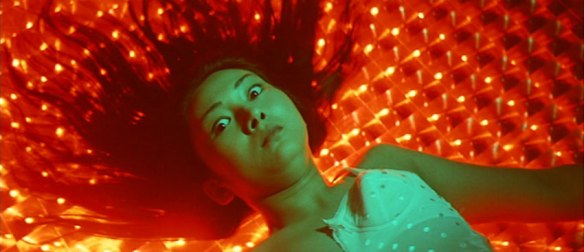Contrary to my original plan to write about 1960s Italian horror (don’t worry, I will), this week we’ll go back to the gorgeous Meiko Kaji, whom I wrote about in the Lady Snowblood post.
No katana and kimono, this time. Let’s have a look at the first film of the Scorpion series, an example of the Japanese Pinky Violence sub-genre (in a nutshell, sexy girls killing people).

Technical details:
Original title: Joshû 701-gô: Sasori
Director: Shunya Itô
Writers: Fumio Kônami, Hirô Matsuda, Tooru Shinohara
Production: Kineo Yoshimine
Cast: Meiko Kaji, Rie Yokoyama, Yayoi Watanabe, etc.
87 mins, colour.
(Joshû 701-gô: Sasori on IMDb)
IMDb rating: 7.4/10
Rotten Tomatoes rating: 85%
Toni’s rating: 1 bucket of mud and 1/2 Tarantino
Plot:
Nami is deceived by the man she loves and goes to jail, becoming prisoner number 701.
There, she endures all the worst tortures and abuses with determination, driven by her thirst for vengeance.

Polenta’s comment:
I was expecting some extremely kitsch film when I pressed play, and this is a pretty tacky one indeed.
But man, is it a beauty!

In case you don’t know me yet, I have a weak spot for anything (I consider) aesthetically beautiful.
With Meiko Kaji as the main character it’s an easy win.

But a pretty lady is not the only admirable thing you will find in this film.
Here’s a quick list:
- The expressionism: the above-mentioned bastard makes a yakuza gang rape Nami. This happens on a glass floor so that we can watch the crude scene from below, almost from the girl’s point of view.
Soon afterwards, when she’s still lying on the floor, Nami discovers his man made this to her, and the glass underneath her lights up bright red. Her hair spreads in stop-motion around her head while a look full of hatred appears on her face. At first you’re like ‘What the heck is that.’ but when you see her eyes you think ‘Well, that gives the idea across alright.’
- The symbolism: Nami’s boyfriend unwraps her from a white blanket before taking her virginity, which is shown as a blood stain that blossoms on the fabric filling up the screen. And you smirk at the resemblance with the Japanese flag.
- More expressionism: in jail, Matsu (Nami) attempts to bring justice among the prisoners. A bitchy one, once her deception is revealed, gets pretty angry at Matsu and chases her with a broken glass. The interesting thing is that, to show just HOW much pissed of the woman is, she suddenly turns in a kabuki theatre mask.

Yeah well imagine *this* chasing you in the shower room…
- More Symbolism (?): Matsu eventually escapes to complete her revenge. She visits the guys who raped her one by one to kill them and, when they recognise her, a green light shines on their faces. I’m not quite sure about the possible meaning of the colour green, but the point is: he turns, he sees her, scared face, green light, and you automatically know the guy is screwed. It works.
- The Drama: at the very beginning, we see Matsu and Yuki, another prisoner, trying to escape. They run in the fields, chased by guards and dogs, but Yuki can’t run anymore. Matsu sees blood between her legs, but they have to be quick. So she tells her it’s only her period, it must have stopped before because of the hard life in jail. And they keep running. You’ve been watching the film for few minutes, one single scene, and you’re depressed already. Great.

Perplexing/funny things:
– The camera that turns, spins, flips.
E.g., during the fighting scene, to make Matsu and the bastard’s figures fit in the screen, the camera shows them horizontally. Also, when Matsu is tortured, the camera starts spinning furiously.
– Everyone violently strips everyone, with no particular reason.
– The policewoman in plain clothes that tries (in vain) to talk with Matsu and ends up begging the colleagues to throw her back into jail again so she can ‘talk’ with her some more.
– Clearly no one manages to hit nothing with anything during the fight scenes.
Fun fact:
Like Lady Snowblood, this film has obviously inspired good old Quentin’s work, and songs from both the movies (sung by Meiko Kaji herself) have been used in Kill Bill’s soundtrack.
And, finally, one question:
Is it at least a bit plausible that prisoner uniforms used to be such pretty tie-dye striped dresses or is it just an homage to the hippie fashion?
Ça va sans dire, I intend to watch the sequels ASAP.
